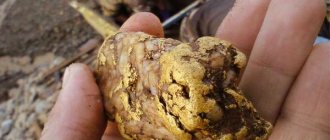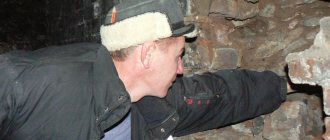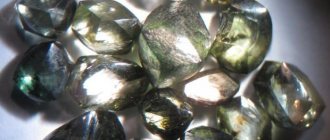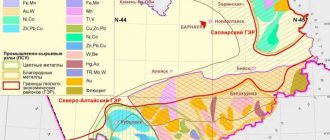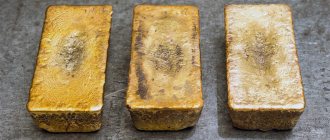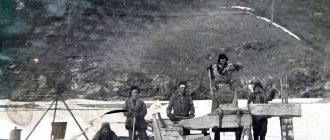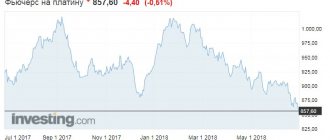Good afternoon We know a lot about the American gold rush - the unorganized mining of the precious metal by prospectors, mostly poor adventurers. Writers (Jack London, Jules Verne) and Hollywood cinema contributed to the mythologization of the gold rush in the United States. Stories about the tragic fate of the indigenous population of America - the Indians - played a role.
Gold deposits in Russia are also numerous. We have not been spared by the general obsession with wealth. The Russian gold rush lasted from the beginning of the 19th century and covered Siberia and the Far East - at that time remote, undeveloped territories.
There was a legend about Yegor, nicknamed Lesnoy, a former convict who was one of the first to begin independent mining in the Berikul River basin, but never reported where exactly he could find gold.
Where does gold come from?
Metals with an atomic mass of more than 55 units (heavier than iron), which cannot be formed inside stars, arise as a result of gamma-ray bursts - releases of energy in space during supernova explosions. Gold came to Earth with asteroids many years ago, when our planet was just being formed and had no atmosphere. Most of the heavy elements sank below the Earth's surface and formed the core.
There are few precious metals on the surface. Their main volume is located in the mantle - the substance between the earth's crust and core. In the upper layers of the mantle, a hot melt is formed - magma, which in some places penetrates the surface of the Earth. There it hardens and turns into solid rock, containing almost the entire periodic table.
Magma is heterogeneous, hardens unevenly - refractory substances coexist with low-melting substances, and the latter continue to circulate inside the solidified former. This is how gold veins are formed within the rock.
Classification of gold deposits
There are two types of deposits. They are divided into:
- primary, they are also radical;
- secondary - alluvial.
Indigenous
Primary deposits are the same fragments of magma ejected onto the surface of the globe. It happens that gold is present in the rock in the form of veins and nuggets, but more often it is alloyed with other elements: gold ores with copper, quartz, iron and sulfur compounds, and polymetallic alloys are common.
The main deposits of gold mined in Russia are concentrated in primary deposits.
Alluvial
Secondary deposits appeared as a result of destruction (weathering) of primary ones. Weathering refers to the impact not only of air currents, but also of water, temperature changes and even the activity of bacteria. It was alluvial deposits that were so diligently developed by amateur, lone miners.
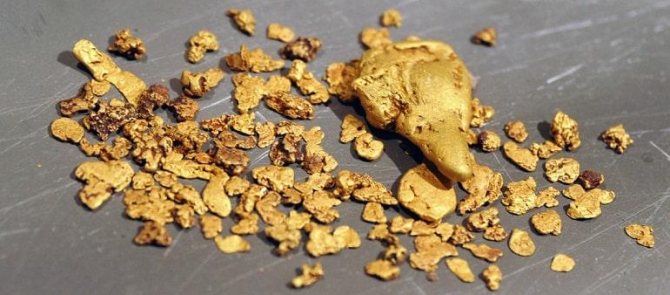
Until the end of the 19th century, gold was mined mainly from placers - by washing (sliding), which is possible due to the relative gravity of gold. Lighter impurities were washed away with water, leaving gold sand in the washing trays, which was melted into ingots and products.
At the end of the 19th century - during the era of the birth of the scientific and technological revolution - technologies appeared that made it possible to effectively develop igneous rock. This has affected the scale of gold mining: it is believed that 60% of all gold mined in the entire history of mankind is metal produced over the past 150 years.
Gold mining map
In this article I will consider only a few regions of Russia - keep in mind, there are many more, especially in the Far East, Far North and Siberia.
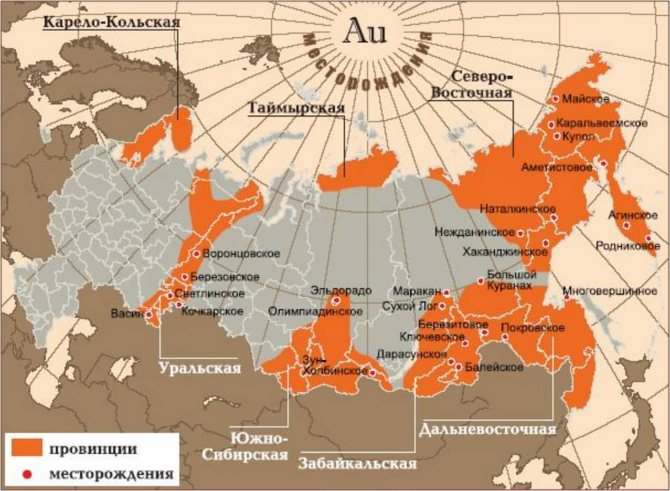
Deposits of the European part of the Russian Federation
The largest amount of gold was deposited in areas where magma often reached the land surface - now there are mountains and hills, like in the Urals and Magadan. Therefore, in Central Russia there is almost no search for gold.
There are some placer deposits in the Kostroma region, on the Chabra and Chashchevaya rivers, but they are unlikely to be of interest to large gold mining companies. However, this is not a hindrance for amateur enthusiasts: if you want to try to wash a couple of grams of precious metal in the river, know that this is possible.
West of the Ural Range there are only three industrial gold mining provinces:
- Dnieper-Donetsk zone;
- Karelo-Kola;
- Caucasian.
The gold mining potential of these zones is the smallest of all those located in Russia.
Deposits of the Urals and Trans-Urals
The Ural gold mining province is fourth in the Russian ranking. It is inferior to the Baikal-Vitim, Altai-Sayan and Verkhoyansk-Kolyma provinces. The development of deposits in the Urals began in the 18th century, and by the end of the 20th century there were already more than 300 mines operating here.
The gold mining industry is most interested in primary deposits, but in the Urals and the West Siberian Plain there are many placers - mainly alluvial, that is, accumulated in river beds, “alluvial deposits”. The largest of them are located in the Perm, Chelyabinsk and Sverdlovsk regions.
Deposits of Eastern Siberia
Eastern Siberia is a region of Russia rich in precious deposits. Transbaikalia has been developed since the middle of the 19th century. The largest center of gold mining has always been the Irkutsk region: the village of Bolshie Koty, modern deposits with the picturesque names Sukhoi Log and Chertovo Koryto.
Single miners were content with working in the stream with a shovel and a tray, while organized groups dug orts - underground tunnels that were eventually connected into a network. In such a mine, workers (often convicts) heated the rock from morning to night.
It was dangerous to be in the orts: despite the fortifications, tunnels and passages kept collapsing, burying people under them. No one knows how many of these mass graves have survived - the comrades of the victims erected an impromptu monument and left, refusing to develop the deadly mine.
History of the development of gold deposits in Russia
Probably everyone has heard about the great gold rush in the middle of the 19th century in California, the Klondike or Alaska. But few people know that in Russia at about the same time, thousands of people lived the dream of fabulous wealth, pondering where to look for gold. After the Senate adopted a decree that allowed private individuals to freely mine gold, people flocked en masse to the sparsely populated areas of the Urals in the hope of finding a gold mine. It must be said that such activities often brought the expected results. Villages began to be built around the deposits, trade developed, and researchers arrived to expand the mines. In general, it was the Siberian Gold Rush that contributed to the flourishing of the region and helped it become one of the country's industrial centers.
The most famous deposits
Sukhoi Log
Sukhoi Log is a deposit in the Lensky gold mining district (Irkutsk region). In its depths there are 2,500 tons of gold and 1,500 tons of silver (according to rough estimates). The concentration of pure precious metal in the ore is low; there are sections of the rock with a gold content of less than 1 g/t. The geological and industrial type of Sukhoi Log is a gold sulfide deposit, that is, the predominant impurities in the rock are sulfur compounds, mainly pyrite (iron pyrite). The average gold content in the ore is 2.7 g/t.
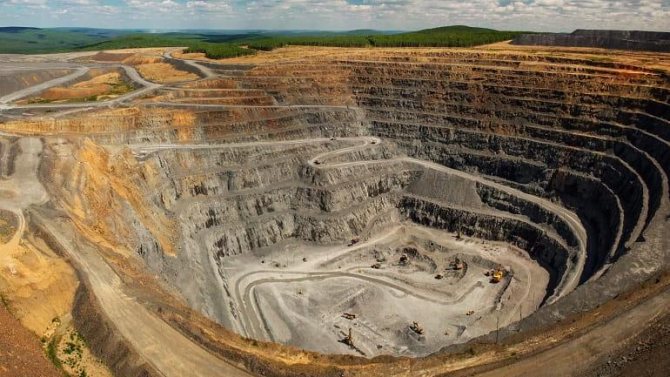
Sukhoi Log was opened in 1961 and is still being developed. Its reserves account for 15–28% (according to various sources) of all deposits in Russia.
Berezovskoe
The Berezovskoye deposit is a gold-sulfide-quartz deposit. It is located in the Sverdlovsk region (Middle Urals) and is considered one of the first discovered in Russia, standing at the origins of our gold mining. In 1748, the village of Berezovsky arose near the mine - now a satellite city of Yekaterinburg. The Berezovskoye field is being developed underground.
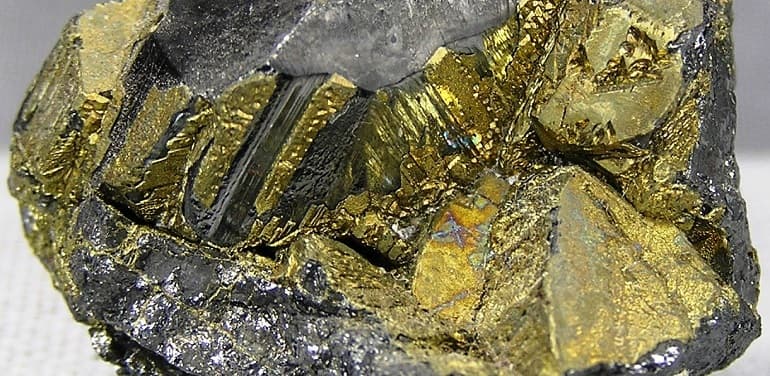
Vorontsovskoe
The Vorontsovskoye deposit (Middle Urals, 12 km from Krasnoturinsk) was discovered in 1985 by geologists and has a gold-arsenic-sulfide technological type. It is developed using an open-pit method - people and machines extract ore from a quarry.
Natalka
Natalka is located 390 km from Magadan, in the Tenkinsky district of the region. This is a gold-quartz deposit, the second largest resource in Russia after Sukhoi Log. The average gold content in the ore is 1.7 g/t.
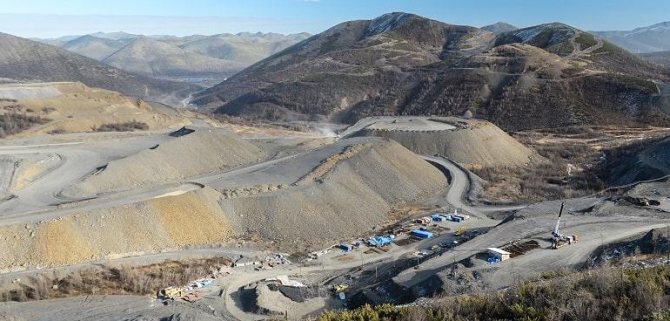
The Natalka gold deposit was also discovered by geologists in the 1940s. It bears the name of Natalya, the daughter of D.T. Aseev, who discovered a gold-bearing stream at the site of future mining.
Which deposit is the largest?
The largest gold deposit in Russia is the above-mentioned Sukhoi Log. It has not yet been fully developed and has long been considered unpromising due to the fact that mining is complicated by the uneven, sometimes low, gold content of the ore. People have yet to master it.
The richest mines
Mine Solovyovsky
At the moment it can be called the largest in the Amur region. Alluvial gold is mined here. The field began to operate in 1866. It was after its discovery that mines began to appear throughout the Far East, which laid the foundation for the creation of the gold industry.
For the first time, foreign equipment began to be supplied to this field, which made it possible to lay prospects for many years to come.
Mine Udereisky
It is located in the Krasnoyarsk Territory. It can be called relatively young, even though it has been actively developed for almost ten years. Placer deposits are developed using hydromechanical and dredge mining methods. This mine is operated by a company that uses modern mining equipment in its activities.
Nevyanovsky mine
At the Nevyanovsky mine, yellow metal began to be mined at the very beginning of the eighteenth century, but the tsarist government was not informed about its discovery, so that it would not take it into its own hands. However, after some time they learned about it and all the nearby factories began to generate income for the king.
Gradsky mine
It was here that diamonds were first discovered in the Russian Empire in the eighteenth century. Therefore, they began to intensively search for diamonds here along with gold mining.
Dambuki
Today, there are two mines operating at the Dambuki mine: an old one and a new one. Gold mining here began over a hundred years ago, and since the late eighties of the twentieth century, production has been greater than the volumes mined at the Gradsky mine.
Conder
This mine was opened in 1969. Miners mainly work here. Over the entire period of the mine's existence, about 150 tons of precious metal were mined. In addition, the mine is rich in platinum. Due to the high income from the mine, the latest technological equipment is actively used here.
Drazhny
At the moment, the mine is one of the most successful in the country, bringing significant profits. The company was founded in 1998 on the basis of the existing JSC Zoloto. The company plans to intensify development processes through the introduction of the latest technologies and the use of hydromechanical equipment.
Altaic
This mine is located on two rivers, Andoba and Kaurchaki. At the moment, active development of reservoirs is underway here. This is the largest enterprise, where work began fifty years ago. However, its potential has not yet been fully realized. Some of the deposits in this region allow the extraction of poor quality metal; the ores contain only ten grams of gold per ton. But relatively recently, deposits were found that are distinguished by high-quality ores. According to rough estimates, there are 350 tons of precious metal here. The Maysko-Lebedsky hub has great prospects, the development of which will begin in the near future.
Gold mines of the Russian Federation provide quite high profits, because prices for this precious metal are at a consistently high level. In just one year, on average, our country receives about one billion rubles in income from gold to the budget sector.
How and where gold deposits can be developed
In many countries of the world (Australia, Finland, some US states), the government solved the problem of private mining simply - it resolved it. All you have to do is buy a license and you’re welcome to the stream with your tray. Citizens are allowed to use what they have obtained at their own discretion.
It's different in Russia. It is almost impossible to become legalized as a gold miner, Art. 191 of the Criminal Code of the Russian Federation is in effect, and the found metal must be handed over to the state. The bill on civil liberties and the issuance of licenses has been considered in the State Duma since 2009, but has not yet been adopted.
A single miner should focus on the map of alluvial deposits, of which there are many in the Urals and Transbaikalia. There are abandoned mines, the residual deposits of which are of no interest to industrial developers. You can find gold in river basins:
- Sanarka;
- Lena;
- Bodaibo;
- Big Chanchik;
- Bom;
- Talga et al.
Also see below how gold is mined by a prospector:
Magadan Region
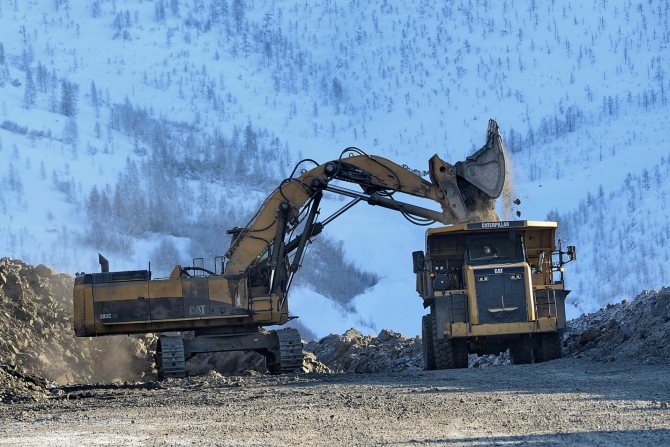
The leaders in gold mining in the country are concentrated in the Far Eastern Federal District and the Siberian Federal District. Of these, the Magadan region ranks first in alluvial gold mining in the country. In total with ore deposits, at the end of 2017, 33 tons of gold were mined here. Moreover, the search began relatively late - only in the 30s of the last century. Now there are approximately 180 mining enterprises in the region; the main concentration of gold today is mined in the Pavlik ore deposit. Currently, the Cabinet of Ministers is negotiating to provide private miners with official legal permission to search for gold in the Magadan region, which will definitely fuel the interest of individual treasure seekers.
